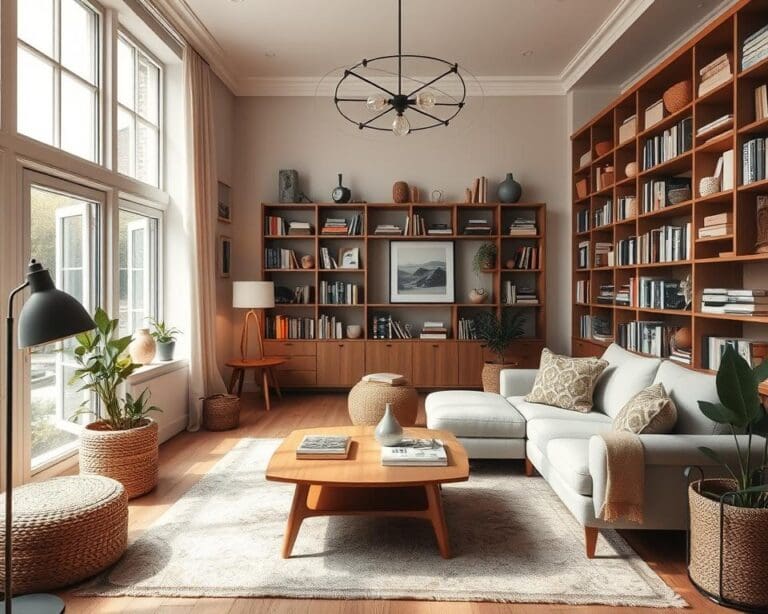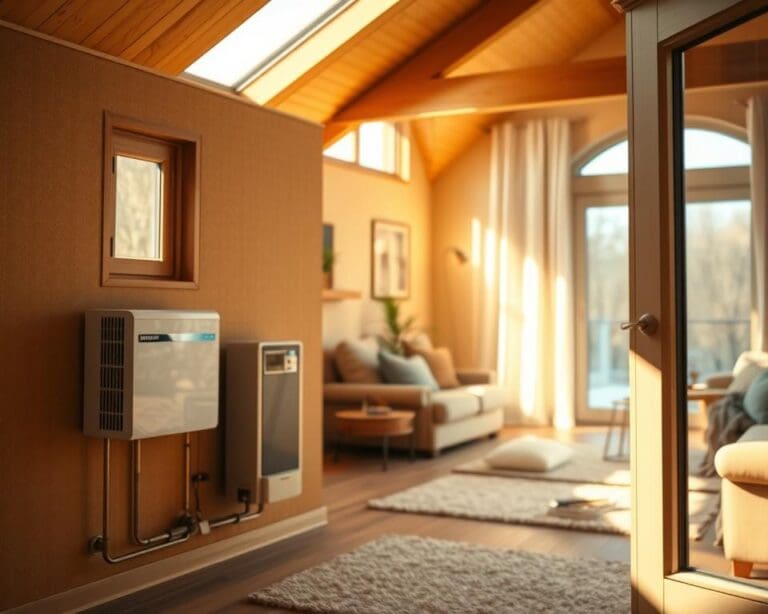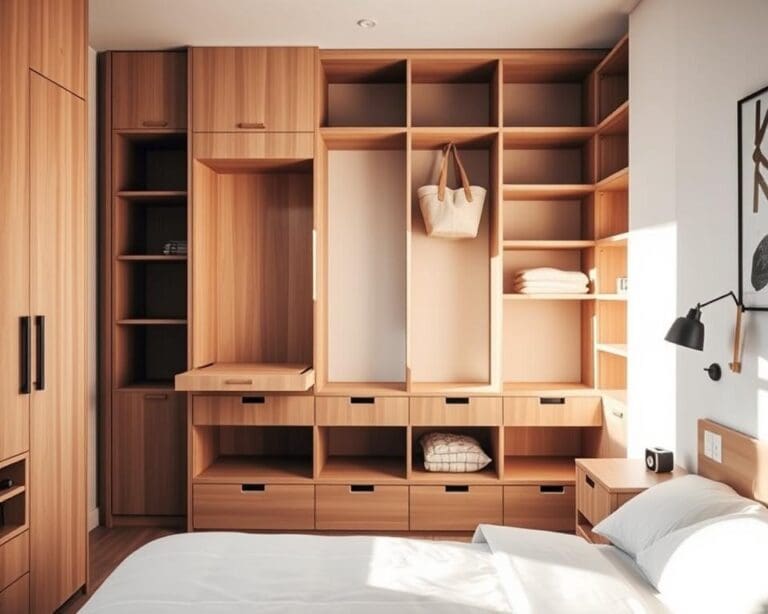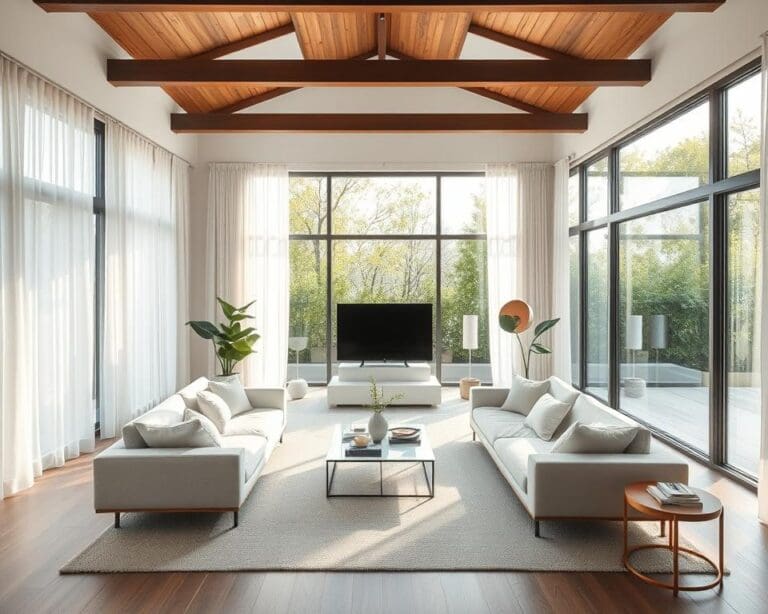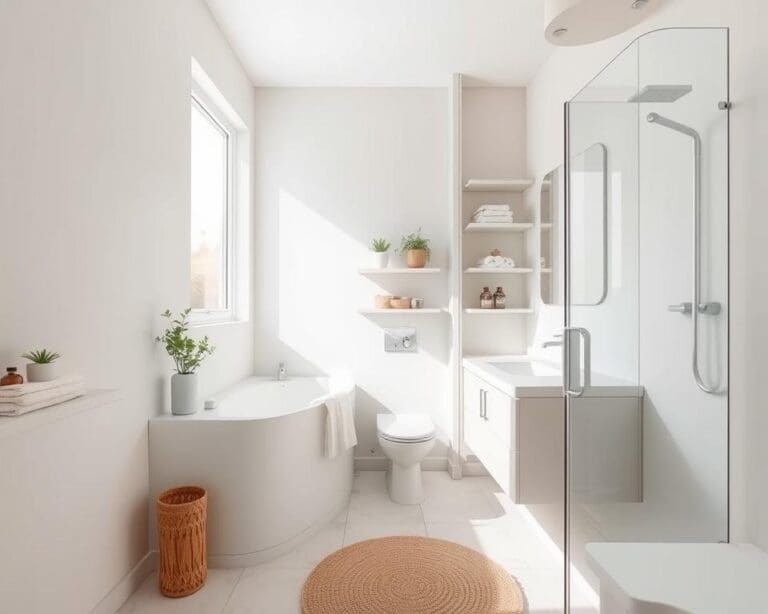As we look towards 2025, the home design trends are evolving to meet the changing needs of society. A focus on sustainability and technology is reshaping modern interior design, pushing for spaces that are not only aesthetically pleasing but also mindful of their environmental impact. This article delves into contemporary home trends characterised by innovative styles that enhance both functionality and comfort. From eco-friendly materials to smart home technology integration, understanding these emerging trends can inspire homeowners to refresh their living spaces in a more thoughtful manner.
Sustainable and Eco-Friendly Designs
As the world becomes more conscious of environmental impacts, sustainable home design is gaining significant traction. Integrating eco-friendly materials into home décor not only enhances aesthetics but also promotes a healthier living environment. This trend prioritises both style and sustainability, appealing to those who value nature.
Natural Materials in Home Décor
Incorporating natural materials such as reclaimed wood, bamboo, and stone creates a warm and inviting atmosphere. These eco-friendly materials offer durability and a unique character, often unavailable in factory-made products. Choosing thoughtfully sourced items not only benefits the environment but showcases an individual’s commitment to sustainable home design.
Energy-Efficient Home Features
Energy efficiency plays a crucial role in modern home design. Integrating features like solar panels and smart energy systems significantly reduces carbon footprints while lowering utility bills. Innovations in insulation, energy-efficient windows, and appliances further enhance sustainability, ensuring that homes are both comfortable and environmentally responsible.
Biophilic Design Principles
Emphasising a connection to nature, biophilic design principles create home environments that foster physical and mental well-being. Incorporating indoor plants, green walls, and natural lighting not only elevates aesthetics but also improves air quality. This approach encourages a sense of tranquillity and connection with the outdoors, enriching the overall living experience.
Smart Home Technology Integration
The integration of smart home technology is transforming contemporary living. This advanced mechanism simplifies everyday tasks through home automation, allowing homeowners to manage their environments with unprecedented ease and efficiency. With systems for smart lighting and heating readily available, the possibilities for enhancing convenience are remarkable.
Automation for Convenience
Home automation empowers residents to control various aspects of their homes from their smartphones or tablets. Imagine returning home and having the lights switch on automatically, the heating adjust to a comfortable setting, and even the security system activating itself. Such technological conveniences eliminate the need for manual adjustments, providing a seamless user experience that saves time and effort.
Energy Management Systems
Energy management systems play a vital role in the sustainable use of resources. These systems monitor energy consumption, offering insights that help homeowners make informed decisions. By optimising usage patterns, residents can reduce waste and achieve significant savings on energy bills. Many systems integrate with smart home technology, creating a comprehensive approach to energy efficiency that supports eco-friendly practices in every household.
What are the latest home design trends in 2025?
As society continues to evolve, so do the preferences for home spaces. In 2025, open floor plans emerge as a top choice for their ability to create inviting and airy atmospheres. These designs promote interaction among family members and guests, fostering a sense of togetherness. A well-executed flexible home design allows for the seamless transition between different areas, enhancing the functionality of the entire living space.
Open Floor Plans with Flexibility
Open floor plans have gained prominence due to their adaptability. Homeowners appreciate layouts that can easily accommodate gatherings, quiet moments, or casual day-to-day activities. Emphasising both style and practicality, these designs remove unnecessary barriers, resulting in cohesive spaces that feel larger and more connected. This flexibility is essential for modern living, catering to the needs of families as they navigate various activities throughout the day.
Multi-Functional Spaces
Multi-functional spaces play a crucial role in contemporary home designs. Areas traditionally reserved for a single purpose now serve multiple functions, revolutionising the way homes operate. For example, living rooms can transform into workspaces, play areas for children, or guest quarters when needed. This shift towards versatile environments allows homeowners to maximise their space and ensure that every corner of their home contributes to their lifestyle. The importance of flexible home design cannot be overstated, as it adapts to the evolving needs of families and individuals alike.
Bold Colour Palettes and Textures
The aesthetic landscape of 2025 embraces an exhilarating shift towards bold colour palettes that invigorate the living space. This trend encourages homeowners to express their individuality through maximalism, celebrating a diverse mix of patterns, textures, and colours. By stepping away from minimalism, one can infuse personality and life into every corner.
Maximalism in Home Decor
Maximalism invites creativity to shine through vibrant and daring choices, allowing spaces to reflect a unique narrative. This design approach highlights eclectic combinations, merging various styles to create an atmosphere rich in character. Bold colour palettes take centre stage, transforming spaces into genuine representations of homeowners’ passions and stories.
Contrasting Materials and Finishes
The interplay of contrasting materials adds a sense of dynamism to textured interiors. Consider the marriage of matte finishes with glossy surfaces or the juxtaposition of natural textures against sleek metals. This combination not only enhances visual interest but also evokes a tactile experience, inviting touch and exploration. Homeowners are encouraged to play with these elements, turning their environments into extraordinary visual feasts.
Artisanal and Handmade Elements
In today’s design landscape, a noticeable shift towards artisanal decor and handmade furniture has captured the attention of discerning homeowners. This trend celebrates unique furniture pieces infused with character, promoting an appreciation for craftsmanship that transcends mere functionality. The rising demand for these one-of-a-kind creations reflects a longing for authentic expression within personal spaces.
Unique Furniture Pieces
Unique furniture pieces not only serve a purpose but also tell a story, encapsulating the spirit of the artisans behind them. Choices such as handcrafted tables, bespoke chairs, and custom cabinetry resonate with a sense of individuality and commitment to quality. Investing in these items means supporting small-scale makers who pour their heart and soul into creating exclusive designs.
Craftsmanship in Design
The revival of craftsmanship plays a pivotal role in the current design ethos. By blending traditional techniques with modern aesthetics, artisans breathe life into their work, ensuring each piece is a statement of creativity. This focus on craftsmanship fosters a deeper connection between the maker and the buyer, cultivating an environment where quality reigns supreme. Incorporating these artistic elements into home decor transforms everyday spaces into curated, meaningful experiences.
Outdoor Living Spaces
The current trend in outdoor living places a strong emphasis on transforming gardens and patios into exquisite extensions of the home. These spaces offer a sanctuary for relaxation and socialising, allowing individuals to immerse themselves in nature. Thoughtful garden design enhances both aesthetics and functionality, incorporating elements that support biodiversity while creating visually appealing environments.
Emphasis on Gardens and Patios
Creating beautiful gardens and patios fosters an inviting atmosphere that encourages outdoor living. The integration of comfortable outdoor furniture plays a crucial role, allowing for leisurely afternoons spent enjoying the fresh air. Popular landscaping ideas include:
- Native plant selections that attract local wildlife
- Varied planting heights to create visual interest
- Water features that add soothing sounds and visual appeal
This intentional garden design not only elevates personal spaces but also contributes to the overall well-being of inhabitants.
Incorporating Nature Indoors
Bringing elements of the outdoors inside enhances home environments by introducing indoor plants that purify the air and promote tranquility. Strategies for achieving this integration might involve:
- Vertical gardens that transform walls into living art
- Thoughtful placement of large houseplants in sunny corners
- Utilising natural light to create bright and vibrant spaces
These techniques allow homeowners to enjoy a continuous connection with nature, enriching their living experience and making homes feel more peaceful.
Vintage and Retro Revivals
The resurgence of vintage decor is undeniably shaping the way contemporary homes are designed in 2025. Homeowners are increasingly embracing retro design trends that pay homage to the charm and artistry of the 70s, 80s, and 90s. This nostalgic retreat from modern minimalism allows individuals to express their unique personalities through colour schemes and furnishings that evoke cherished memories.
Integrating vintage pieces into a modern setting can yield a harmonious blend of styles. Consider pairing a classic mid-century sofa with sleek contemporary art, or using a retro coffee table alongside modern seating arrangements. Such combinations offer warmth and character, demonstrating that nostalgia in design can coexist beautifully with today’s aesthetic preferences.
As the lines between past and present blur, more homeowners find joy in curating spaces that reflect their history and personal taste. Whether it’s a vintage record player proudly displayed on a stylish shelf or a collection of unique retro accessories adorning a modern workspace, these elements contribute to a rich narrative within the home, inviting conversations and forging connections.



